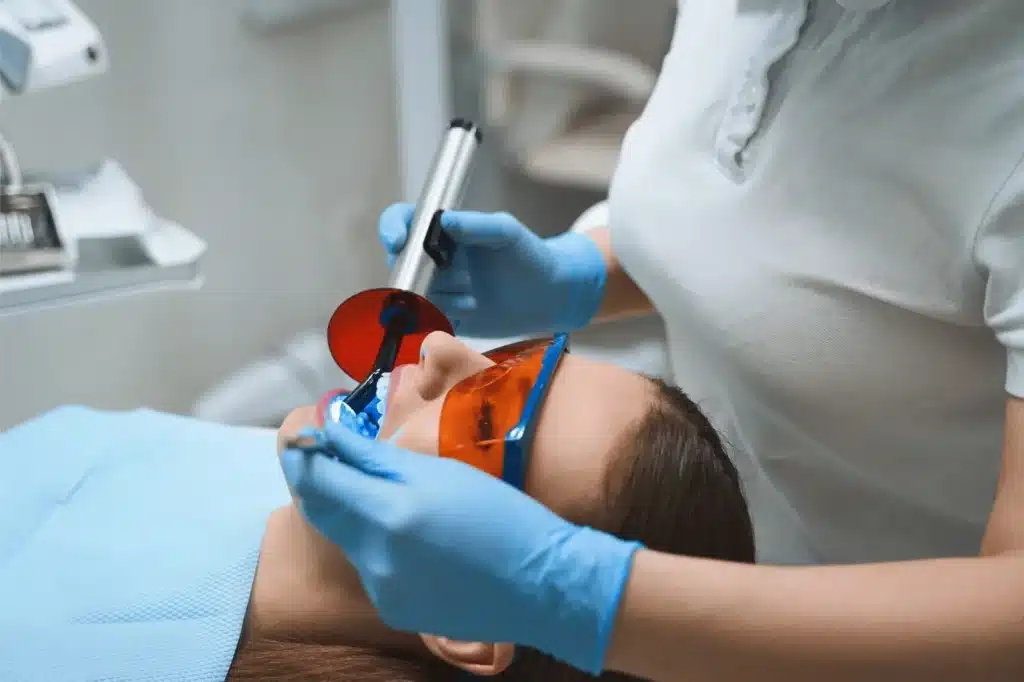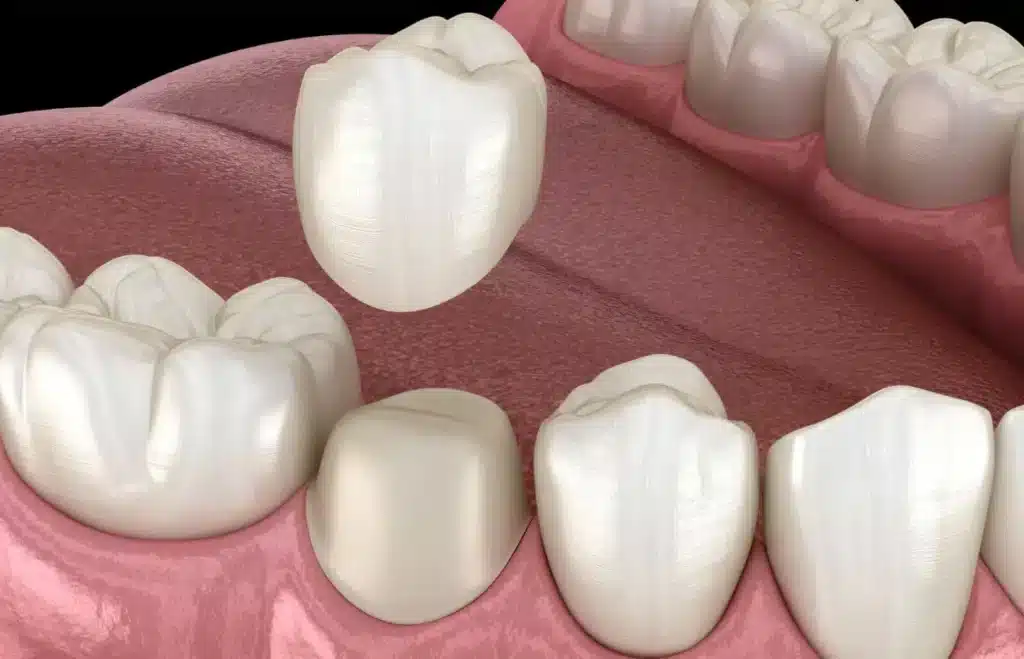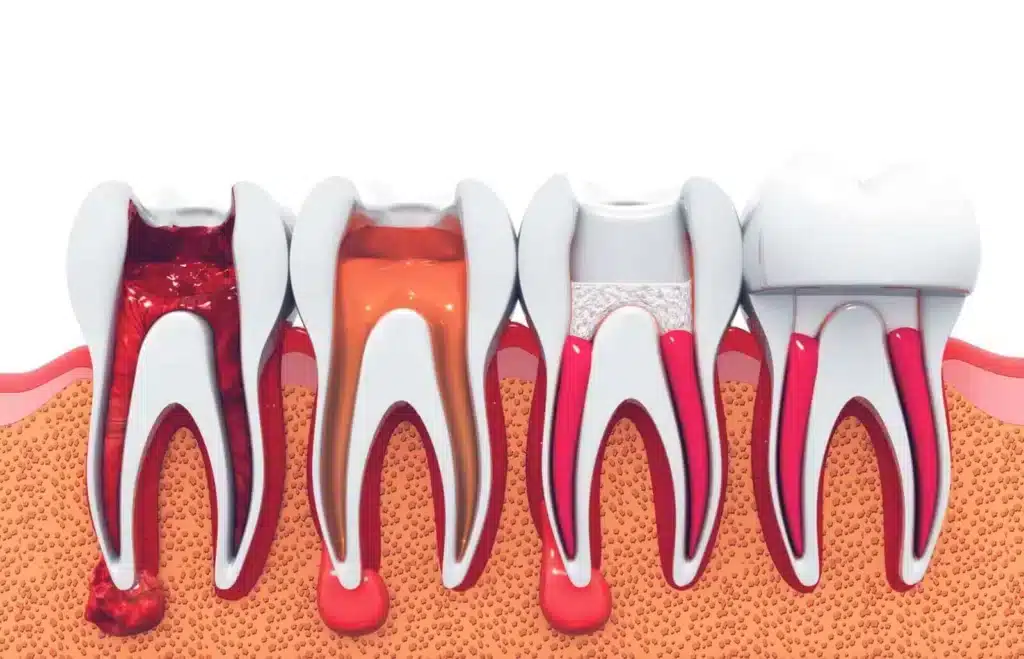Are you suffering from severe tooth pain, and nothing’s working? Read to know how root canal treatment relieves severe toothache.
Root Canal Treatment
A root canal treatment helps relieve severe toothache because of an infection or abscessed tooth. During treatment, the dentist removes the infected part inside your tooth, cleans it up, and then puts a filling to close the space.
Required For
Root canal treatment is needed when harmful bacteria get inside your tooth. It can happen if you have a cavity for a long time and don’t treat it. It can also happen if your tooth gets cracked or hurt because of an injury.
Signs You Need Root Canal
Here are some signs you need root canal treatment:
- Your tooth hurts a lot and doesn’t stop.
- Tooth sensitivity to hot or cold things, the pain lasts a few seconds.
- Your gums are swollen and might have a pimple-like bump.
- Sometimes, you get a pimple on your gums, which tastes or smells bad.
- Your jaw might swell up.
- Your tooth changes color and looks darker.
- When you eat or touch your tooth, it hurts.
- Chipped or cracked teeth can let bacteria reach the inside of the tooth.
- Your tooth might feel loose because the infection can weaken the bone that holds it.
Getting Ready for a Root Canal
Before you have a root canal, your dentist will answer your questions and explain what will happen. Here are a few things you can do to prepare:
Take Your Medicine: If your dentist prescribes antibiotics or anti-inflammatory drugs, take them as directed. This might happen a few days before your appointment, especially if you have a lot of infection.
Quit Smoking: Smoking can slow down your body’s healing. Try not to smoke for several days before your root canal; if possible, quit altogether.
Have a Good Meal: Since the numbing stuff the dentist uses will make your mouth feel funny for a few hours, eating before your appointment is a good idea.
Procedure Duration
The time a root canal takes depends on how much infection is in your tooth. Procedure takes about 30 to 60 minutes. If you have a big tooth with many roots, it can take up to an hour and a half.

Procedure
Here’s what the dentist does during your root canal:
Anesthesia: First, the dentist numbs the tooth and the gums around it. If you’re nervous, they might give you something to help you relax.
Dental Dam: They put a little rubber sheet around the tooth to keep it dry during the procedure.
Opening: They make a small hole in the top of the tooth to reach the inside.
Removing the Stuff: Small tools remove the nerves, blood vessels, and tissues inside the tooth.
Cleaning and Shaping: After removing the stuff inside, they clean and shape the inside of the tooth.
Filling the Canals: The empty spaces inside the tooth are filled with a rubbery gutta-percha material.
Sealing: A temporary filling is placed to seal the tooth and remove bacteria.
Final Restoration: In most cases, you’ll need a dental crown to protect the treated tooth and normalize your bite. Crowns are custom-made, and getting one usually takes a few weeks. When it’s ready, the temporary filling is removed, and the permanent crown is put on. In some cases, you can get a crown during the same appointment.

Does a Root Canal Hurt?
Many people worry they will have tooth pain after a root canal treatment. But, because the infection source is removed during the procedure, most people feel better afterward. If you still have strong, throbbing pain after a root canal, contact your dentist immediately.
What To Expect After a Root Canal?
You shouldn’t have immense pain after a root canal treatment, but it might feel sensitive for a few days. It is normal; you can manage it with the dentist’s or over-the-counter pain medicine. Usually, the sensitivity goes away within one to two weeks.
Who Does the Root Canal?
Regular dentists can do a root canal. A root canal specialist called an endodontist also performs root canal procedures. Regular dentists can handle teeth near the front of your mouth because they have fewer roots. But if you need a root canal treatment for a tooth with lots of roots, or if your case is tricky, your dentist might send you to an endodontist.
Pros
There are a few benefits to having a root canal treatment:
- It stops the infection from going to other teeth.
- It eases the problems of an infected tooth.
- It lowers the risk of damage to your jawbone.
- You won’t need to get the tooth pulled out.
Alternatives to Root Canal Treatment
The only option besides getting a root canal is to remove the tooth. It’s always best to keep your natural teeth, but sometimes, you might have to remove a tooth to protect your oral health.
The tooth can be removed if you’re not a good fit for a root canal. You can get a dental implant, dental bridge, or a partial denture to fill the space. Talk to your dentist to learn more about whether you need a root canal or tooth removal.
Conclusion
Hope now you are aware of the root canal treatment procedure. Always consult your dentist about the best treatment to ease tooth pain. Contact Dentalsway for more information on root canal treatment costs abroad.


